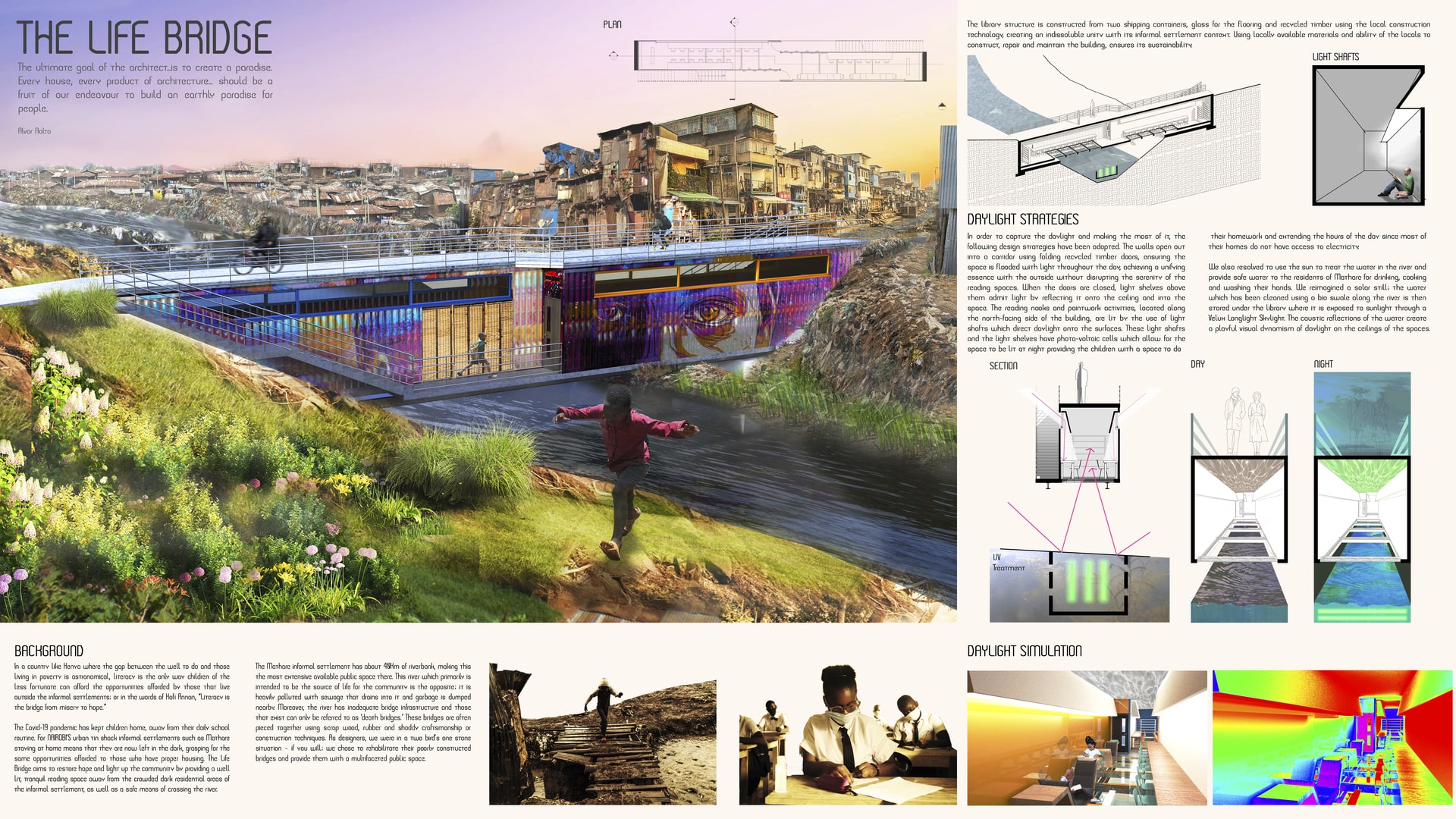Project Description
In a country like Kenya where the gap between the well to do and those living in poverty is astronomical, literacy is the only way children of the less fortunate can afford the opportunities afforded by those that live outside the informal settlements; or in the words of Kofi Annan, “Literacy is the bridge from misery to hope.” The most recent coronavirus disease (COVID-19) pandemic which has kept children away from their daily school life and has highlighted and expounded the gap between those that have and those that don’t. For a child of Mathare, one of Kenya’s largest and most dangerous informal settlements, the biggest threat to their future is their dark, poorly ventilated homes. In contrast, privileged children around the world can stay home and read in their well-lit houses, a basic necessity not afforded by those who live inside the four walls of a tin and cardboard shack. Our project seeks to harness the free and universal gift of daylight to provide sublime reading spaces for children in the informal settlement. When faced with the challenge of where to situate this public space in a densely built area, we looked to the one place all informal settlement dwellers interact-at the river. The Mathare informal settlement has about 40 Km of riverbank, making this the most extensive available public space in the slum. This river which primarily is intended to be the source of life for the community is the opposite; it is heavily polluted with sewage that drains into it and garbage is dumped nearby. Moreover, the river has inadequate bridge infrastructure, and those that exist can only be referred to as ‘death bridges.’ These bridges are often pieced together using scrap wood, rubber and shoddy craftsmanship or construction techniques. As designers, we were in a two bird’s one stone situation - if you will; we chose to rehabilitate their poorly constructed bridges and provide them with a multifaceted public space. Our project, which we have appropriately named The Life Bridge, seeks to create a space for the community that can be the metaphorical light in the darkness. It strives to be a peaceful place at the heart of the choked residential areas of the informal settlement and act as a beacon of hope to the residents of Mathare. We have designed it to be a multifaceted public space as is needed by the community with a walkway, a library and a water point provided. The library structure is constructed from two shipping containers, glass for the flooring and recycled timber using the local construction technology, creating an indissoluble unity with its informal settlement context. Using locally available materials and the ability of the locals to construct, repair and maintain the building ensures its sustainability. The project has adopted the following design strategies to achieve the aim of capturing daylight and making the most of it. The walls open out into a corridor using folding recycled timber doors, ensuring the space is flooded with light throughout the day, achieving a unifying essence with the outside without disrupting the serenity of the reading spaces. When the doors are closed, light shelves above them admit daylight by reflecting it onto the ceiling and into the space. The reading nooks and paintwork activities, located along the north-facing side of the building, are lit by the use of light shafts which direct daylight onto the surfaces. These light shafts and the light shelves have photovoltaic cells which allow for the space to be lit at night providing the children with a space to do their homework and extending the hours of the day since most of their homes do not have access to electricity. We also resolved to use the sun to treat the water in the river and provide safe water to the residents of Mathare for drinking, cooking and washing their hands. We re-imagined a solar still; the water which has been cleaned using a bio swale along the river is then stored under the library where it is exposed to sunlight through a Velux Longlight Skylight. The caustic reflections of the water create a playful visual dynamism of daylight on the ceilings of the spaces. The bridge acts as a solution to the current and future needs of its users. We anticipate the replication of its design throughout the vast expanse of the Mathare informal settlement as well as other informal settlements in Nairobi. The Life Bridge is tuned to the rhythms of the sun, making daylight not only a resource but also a force and a lifeline that can uplift and bring life to forgotten communities.
